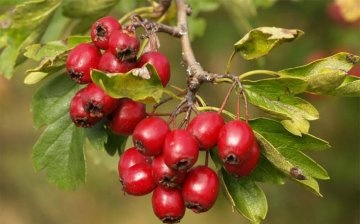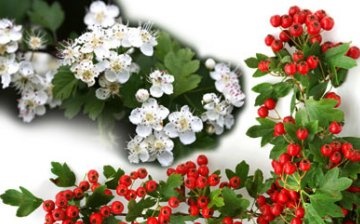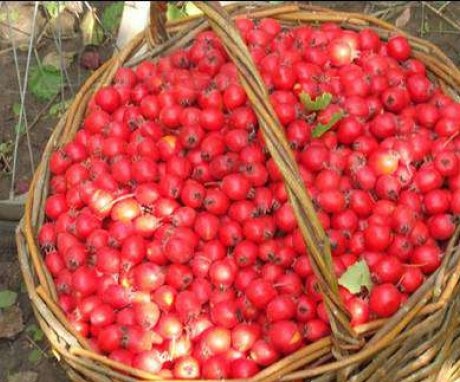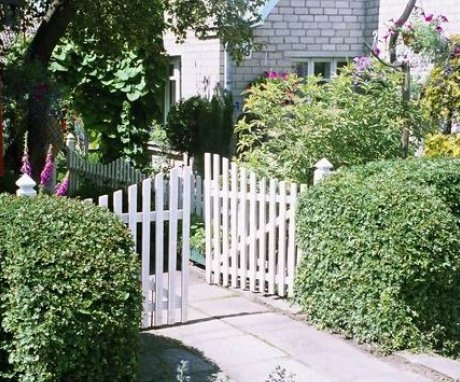Common hawthorn - now on your site
In addition to the plants familiar to summer residents, not the most ordinary, but no less beautiful and useful plants, for example, common hawthorn, can be grown in the garden and vegetable garden. The following species are distinguished, which best of all take root in vegetable gardens: pinnately incised hawthorn, single-seed and prickly.
Content:
- Basic information about hawthorn
- Hawthorn care basics
- When the hawthorn begins to bear fruit
- How to make a hawthorn look beautiful
Basic information about hawthorn
This is the most basic species that is most often planted in plots. By itself hawthorn is a bush or a very small tree. Its crown is quite spreading, and shoots can be actively formed up to 150 years. It does not grow as fast as other plants, but an annual growth of 25 centimeters (both in length and in width) is considered the norm. The crown diameter and its height reach five meters.
The flowers reach one and a half centimeters in diameter, the colors are white or slightly pink, the leaves are obovate, lobed, in the warm season they are rich green, in the fall they turn yellow or yellow-orange. A plant can live for a very long time - 400 years for such a shrub is a normal lifespan, during which it grows to the size of a small tree.
Due to its medicinal properties, hawthorn has become quite popular.
Infusionsmade from hawthorn, as well as jam and just fresh berries are used for asthma, coughs, insomnia and shortness of breath. If you are going to use hawthorn as medicine, a couple of single landings in a suitable place will be enough (you will find out how to choose it a little later). But, due to its beautiful appearance, hawthorn is also used as a decoration of the site.
Decorative groups of this shrub, as well as whole hedges, will refresh your garden, add brightness and originality to the overall picture. Hawthorn was brought to us from Europe, which can be understood if you look at its attitude in certain atmospheric phenomena. As a rule, hawthorn is very photophilous, demanding of moisture, frost-hardy, and does not pay special attention to the soil.
Hawthorn is not the most demanding and rather beautiful plant that can be used both for decoration and for picking berries in medicinal infusions and ointments.
Hawthorn care basics
First you need to prepare soil... Yes, it was said that he is not very whimsical to the soil, but it is not worth planting him anywhere - his growth will clearly slow down, and more care will be needed than usual. So: sod land is mixed with humus, sand and peat in a ratio of 2: 2: 1: 1. After that, a planting pit is dug, into which a little (30-40 grams) of lime is added. It can be replaced with phosphate rock (in this case, you need to take 50 grams of the substance). The drainage layer (10 centimeters of crushed stone) and a layer of 5-19 centimeters of sand are filled in.
You need to feed the plant twice a season: in the spring, 120 grams of wagon kemira is introduced into the soil. Some people use nitroammofosk for these purposes. Immediately before flowering, you need to generously fertilize the common hawthorn with slurry diluted in proportions of 1:10. An adult plant needs about eight liters of this feeding.
Common hawthorn is watered not so often - once a month is enough.
On average, 1-1.5 buckets are poured onto an adult plant.If a drought begins, you do not need to increase the amount of water, just switch to watering twice a month. Young plants should be treated more carefully, as they need more frequent watering, especially if there is a drought in the yard. Increase the amount of water and come to water more often and everything will be fine.
It does not do without loosening, just dig arbitrary circles around the tree in spring or autumn, up to the bayonet of the shovel. At other times, loosening the soil is worth no more than 10 centimeters, and do this only if you are going to remove weeds or loosen the soil a little after too much watering.
You don't need any special care for the hawthorn - the main thing is to follow simple rules, and then your garden will be truly magnificent.
When the hawthorn begins to bear fruit
If you are waiting for the appearance fruits on hawthorn, you should be patient: for at least 5 years the plant will prepare and get used to its new habitat.
After the first berries appear, you can switch to three seasonal feeding:
- The first feeding is done in the spring, when the leaves are just beginning to bloom. Sodium humate (three tablespoons per 10 liters of water), calculated at least 20 liters per bush.
- Second dressing at the beginning of flowering. Potassium sulfate (in the amount of one tablespoon) and nitrophoska (in the amount of two tablespoons) for ten liters of water. For each bush, it is necessary to pour at least thirty liters.
- The last feeding is done directly during fruiting: two tablespoons of sodium humate and three tablespoons of Yagodka fertilizer (or the like) for ten liters of water. The volume of water, like last time, is not less than thirty liters per bush. But you don't need to pour too much water, the upper limit stops at 40 liters.
Hawthorn flowers usually do not smell very good before they begin to bear fruit. This should be taken into account when planting bushes away from home or a place of permanent rest. However, you can try to "kill" the smell by planting something very pleasantly smelling next to it, for example, geranium.
How to make a hawthorn look beautiful
As we already said, hawthorn is a beautiful plant, and with a certain skill, it can be used to make a real decoration for your garden. Branches that are unnecessary and do not fit into the overall picture can be easily removed (you should not be afraid, due to the increased ability to regenerate, this branch will grow back soon).
Hawthorn is very calm about the haircut, so you should not be afraid to cut off the excess.
In the spring, a small prophylaxis is carried out: all dry and diseased branches found are removed. You will have to work a little to understand which branch is completely sick, and which one should be given another chance to recover. If you have a hawthorn in a hedge, then the branches can be cut very strongly, up to 1/3 of the length of the shoot. If the trees are close enough, you can try to shape the groups.
Like all plants, hawthorn is afraid of certain insects. Here is a short list of pests that can slow down the development of a bush or even stop it completely:
- Mite
- Sawfly
- False shield
- Shield
- Weevil
The list of common hawthorn diseases is slightly less:
- Powdery mildew
- Hole spot
- Rust
With age, the frost resistance of hawthorn increases. If it is better to cover young shoots for the winter, then an ordinary hawthorn may well do without it. Of course, if it's -40 degrees frost outside, you can't do without insulation, if in the spring you don't want to see a completely frozen hawthorn.
As you can see, the common hawthorn bush can be made beautiful: the main thing is to cut it in time and make sure that it is not struck by some disease typical of this plant. In general, common hawthorn is a plant that simply must be in your garden.Healing fruits, from which you can prepare a tincture or puree, and a pleasant appearance are just what most site owners need.














An excellent anti-pressure agent. We dry flowers for the winter, but their smell is disgusting, although the tea itself is obtained with a slight sweetish aftertaste.